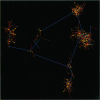Abstract
RNA secondary structure folding algorithms predict the existence of connected networks of RNA sequences with identical structure. On such networks, evolving populations split into subpopulations, which diffuse independently in sequence space. This demands a distinction between two mutation thresholds: one at which genotypic information is lost and one at which phenotypic information is lost. In between, diffusion enables the search of vast areas in genotype space while still preserving the dominant phenotype. By this dynamic the success of phenotypic adaptation becomes much less sensitive to the initial conditions in genotype space.
Full text
PDF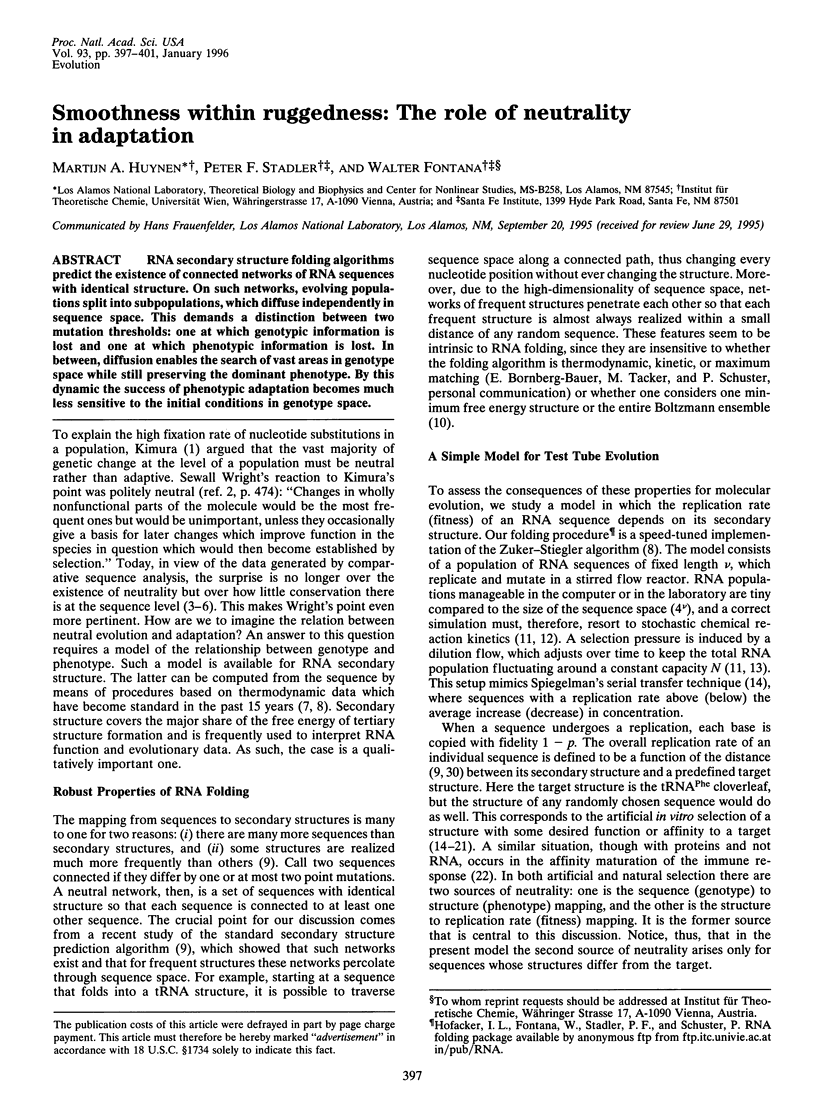
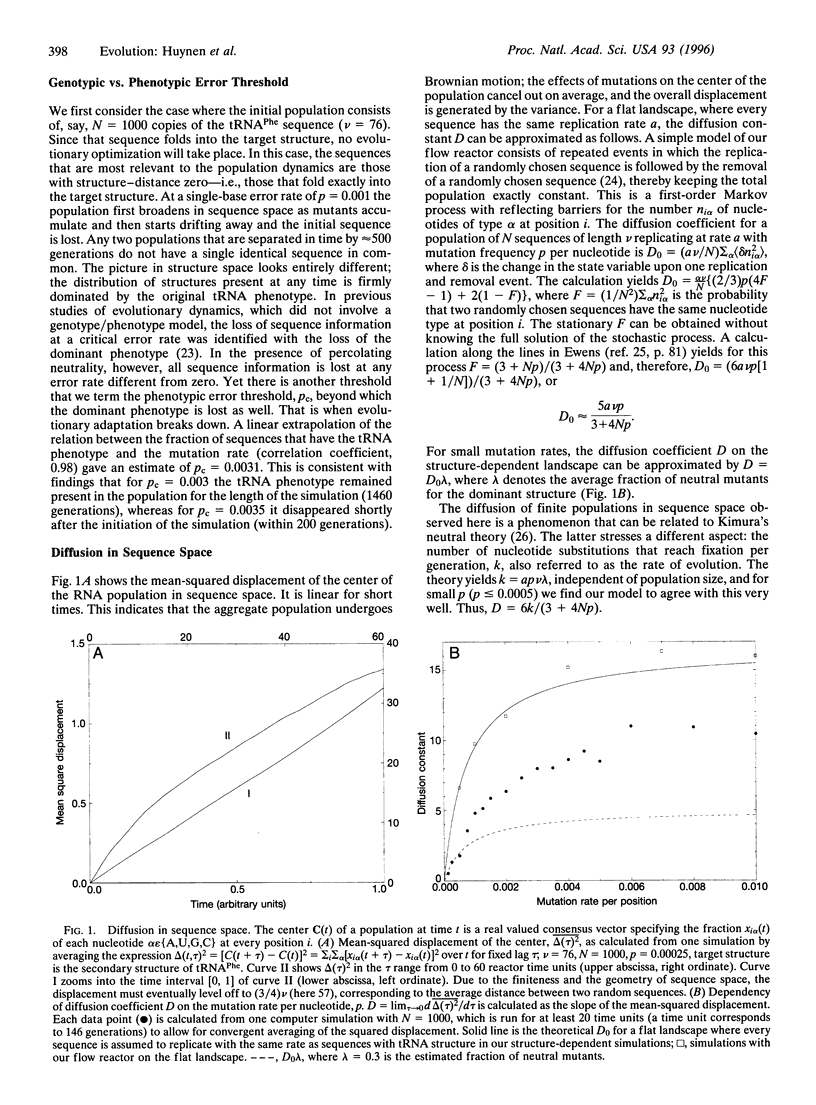
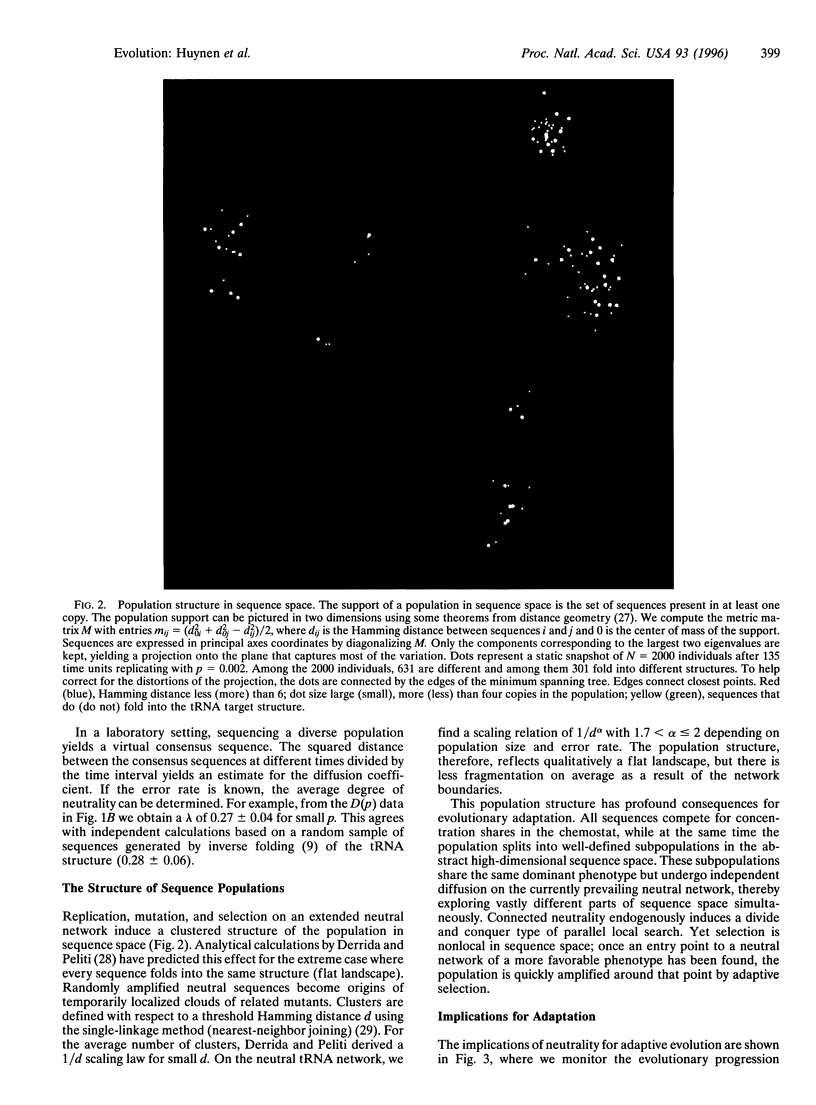
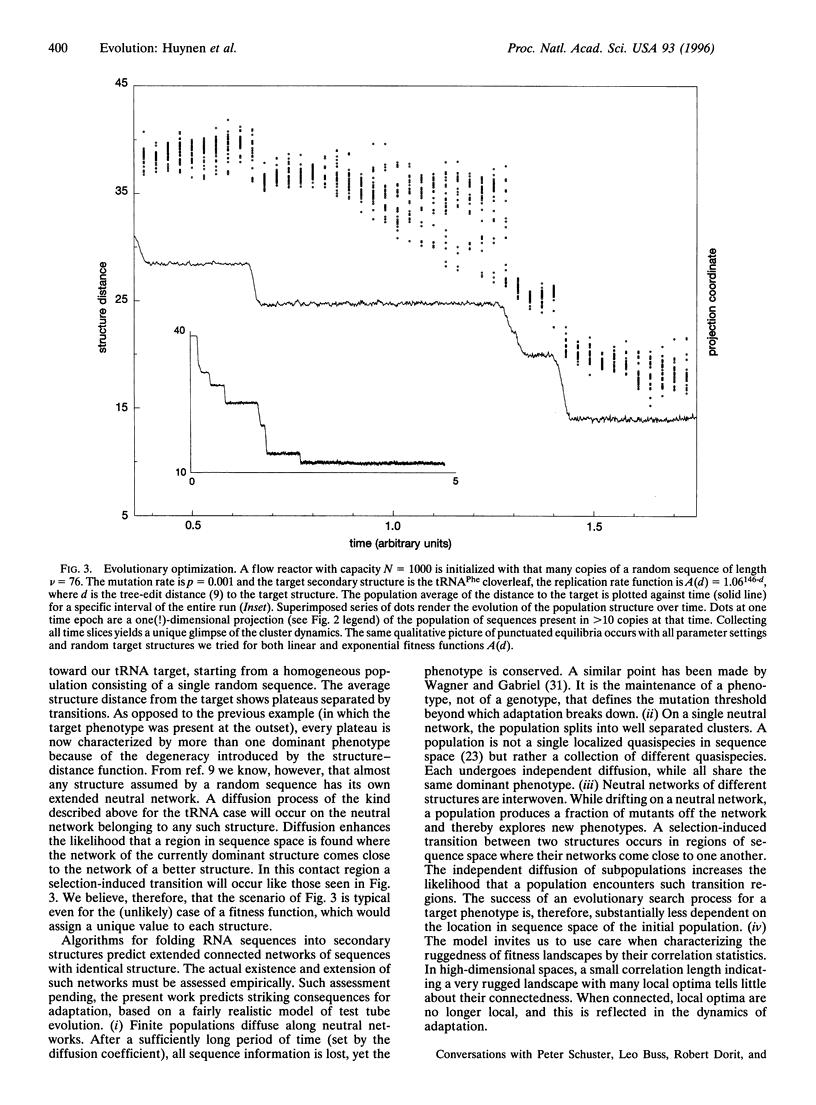
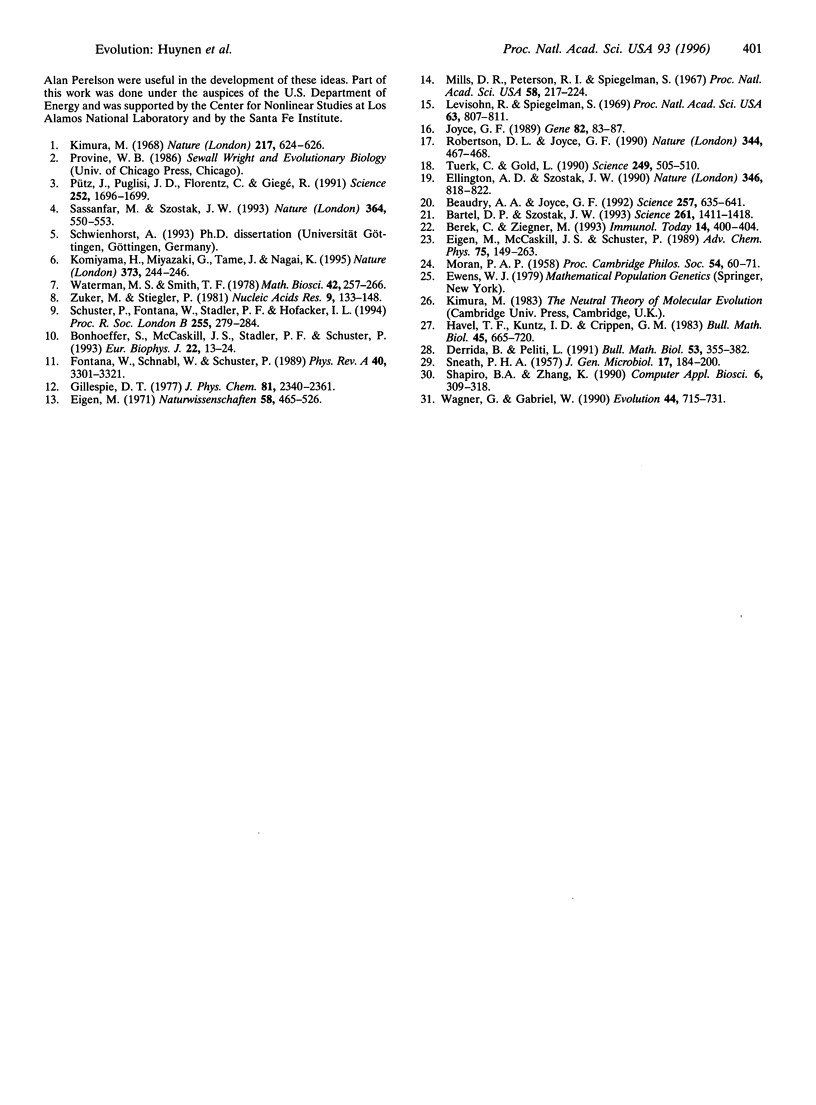
Images in this article
Selected References
These references are in PubMed. This may not be the complete list of references from this article.
- Beaudry A. A., Joyce G. F. Directed evolution of an RNA enzyme. Science. 1992 Jul 31;257(5070):635–641. doi: 10.1126/science.1496376. [DOI] [PubMed] [Google Scholar]
- Berek C., Ziegner M. The maturation of the immune response. Immunol Today. 1993 Aug;14(8):400–404. doi: 10.1016/0167-5699(93)90143-9. [DOI] [PubMed] [Google Scholar]
- Bonhoeffer S., McCaskill J. S., Stadler P. F., Schuster P. RNA multi-structure landscapes. A study based on temperature dependent partition functions. Eur Biophys J. 1993;22(1):13–24. doi: 10.1007/BF00205808. [DOI] [PubMed] [Google Scholar]
- Eigen M. Selforganization of matter and the evolution of biological macromolecules. Naturwissenschaften. 1971 Oct;58(10):465–523. doi: 10.1007/BF00623322. [DOI] [PubMed] [Google Scholar]
- Ellington A. D., Szostak J. W. In vitro selection of RNA molecules that bind specific ligands. Nature. 1990 Aug 30;346(6287):818–822. doi: 10.1038/346818a0. [DOI] [PubMed] [Google Scholar]
- Fontana W, Schnabl W, Schuster P. Physical aspects of evolutionary optimization and adaptation. Phys Rev A Gen Phys. 1989 Sep 15;40(6):3301–3321. doi: 10.1103/physreva.40.3301. [DOI] [PubMed] [Google Scholar]
- Joyce G. F. Amplification, mutation and selection of catalytic RNA. Gene. 1989 Oct 15;82(1):83–87. doi: 10.1016/0378-1119(89)90033-4. [DOI] [PubMed] [Google Scholar]
- Kimura M. Evolutionary rate at the molecular level. Nature. 1968 Feb 17;217(5129):624–626. doi: 10.1038/217624a0. [DOI] [PubMed] [Google Scholar]
- Komiyama N. H., Miyazaki G., Tame J., Nagai K. Transplanting a unique allosteric effect from crocodile into human haemoglobin. Nature. 1995 Jan 19;373(6511):244–246. doi: 10.1038/373244a0. [DOI] [PubMed] [Google Scholar]
- Levisohn R., Spiegelman S. Further extracellular Darwinian experiments with replicating RNA molecules: diverse variants isolated under different selective conditions. Proc Natl Acad Sci U S A. 1969 Jul;63(3):805–811. doi: 10.1073/pnas.63.3.805. [DOI] [PMC free article] [PubMed] [Google Scholar]
- Mills D. R., Peterson R. L., Spiegelman S. An extracellular Darwinian experiment with a self-duplicating nucleic acid molecule. Proc Natl Acad Sci U S A. 1967 Jul;58(1):217–224. doi: 10.1073/pnas.58.1.217. [DOI] [PMC free article] [PubMed] [Google Scholar]
- Pütz J., Puglisi J. D., Florentz C., Giegé R. Identity elements for specific aminoacylation of yeast tRNA(Asp) by cognate aspartyl-tRNA synthetase. Science. 1991 Jun 21;252(5013):1696–1699. doi: 10.1126/science.2047878. [DOI] [PubMed] [Google Scholar]
- Robertson D. L., Joyce G. F. Selection in vitro of an RNA enzyme that specifically cleaves single-stranded DNA. Nature. 1990 Mar 29;344(6265):467–468. doi: 10.1038/344467a0. [DOI] [PubMed] [Google Scholar]
- SNEATH P. H. Some thoughts on bacterial classification. J Gen Microbiol. 1957 Aug;17(1):184–200. doi: 10.1099/00221287-17-1-184. [DOI] [PubMed] [Google Scholar]
- Sassanfar M., Szostak J. W. An RNA motif that binds ATP. Nature. 1993 Aug 5;364(6437):550–553. doi: 10.1038/364550a0. [DOI] [PubMed] [Google Scholar]
- Schuster P., Fontana W., Stadler P. F., Hofacker I. L. From sequences to shapes and back: a case study in RNA secondary structures. Proc Biol Sci. 1994 Mar 22;255(1344):279–284. doi: 10.1098/rspb.1994.0040. [DOI] [PubMed] [Google Scholar]
- Shapiro B. A., Zhang K. Z. Comparing multiple RNA secondary structures using tree comparisons. Comput Appl Biosci. 1990 Oct;6(4):309–318. doi: 10.1093/bioinformatics/6.4.309. [DOI] [PubMed] [Google Scholar]
- Zuker M., Stiegler P. Optimal computer folding of large RNA sequences using thermodynamics and auxiliary information. Nucleic Acids Res. 1981 Jan 10;9(1):133–148. doi: 10.1093/nar/9.1.133. [DOI] [PMC free article] [PubMed] [Google Scholar]



